Often we think of puppets as old-fashioned, boring, or (like my 9-year-old), creepy. While some have a very old history and some may be a bit creepy, they are most certainly not boring. To prove this point, UBC’s Museum of Anthropology has an amazing collection of puppets on display in their Shadows, Strings and Other Things exhibit.
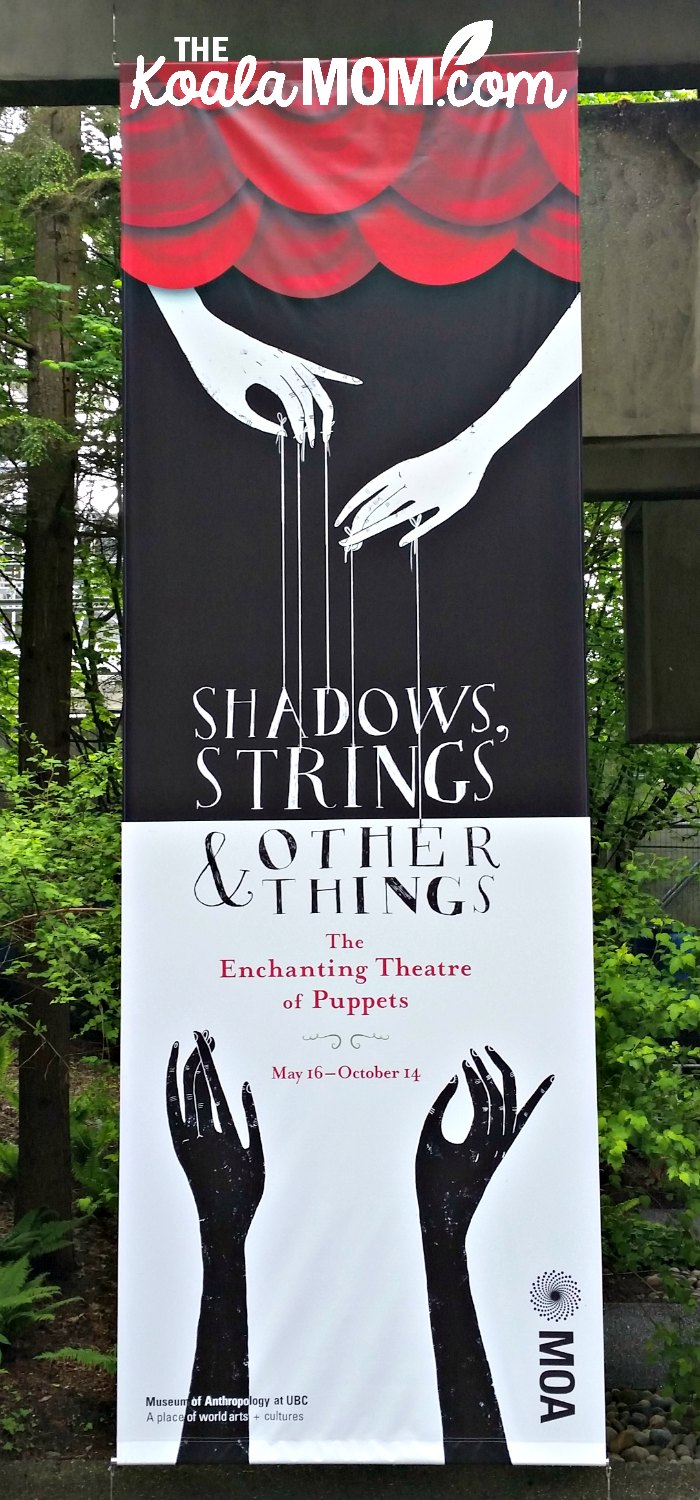
Collecting Puppets for Shadows, Strings and Other Things
Shadows, Strings and Other Things: The Enchanting Theatre of Puppets is an amazing showcase of over 250 hand-crafted puppets from around the world. Sunshine, Lily and I joined a tour by the exhibit curator, Dr. Nicola Levell (Associate Professor, Anthropology, UBC).
Dr. Levell was a wealth of knowledge about puppets, their creation, and their history. I honestly knew little about puppets before arriving for the tour, and I was fascinated.
Puppets are fabulous storytellers and precious knowledge holders. They are educators, entertainers, and satirical commentators, spanning different cultures and millennia. Then as now, it is the human hand and imagination that bring puppets to life and capture our attention. ~ Dr. Nicola Levell
Puppets come in every shape and size. Many cultures around the world have a tradition of storytelling using puppets. Shadows, Strings and Other Things features puppets from North America as well as Europe and Asia. Some are as small as my hand and one puppet was twice as tall as me and requires five puppeteers to move!
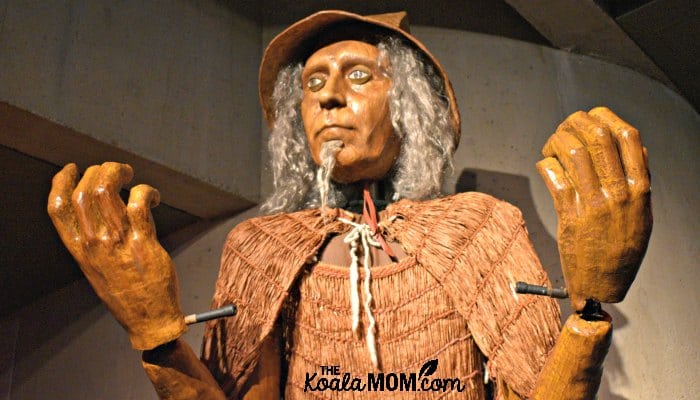
Puppets communicate stories, morals and lessons but also entertain their audiences. All puppets have a sense of play, tapping into our childhood memories. Many are connected with traditional stories, like a Portuguese epic or the Indian Ramayana. Others are being used in modern storytelling, such as stop motion animation and TV shows. (Raise your hand if you’re a Muppet fan!)
Although puppetry traditions have been threatened by political currents and globalizing trends in new media and technology, passionate artists, puppet-makers, and performers continue to create and innovate, drawing on novel storylines, materials, and techniques.” ~ Dr. Nicola Levell
Some puppets are scary or creepy, while others are fun, or even gorgeous and intricate. The details in the puppets at Shadows, Strings and Other Things were absolutely amazing. Each puppet was clearly a work of art and love.
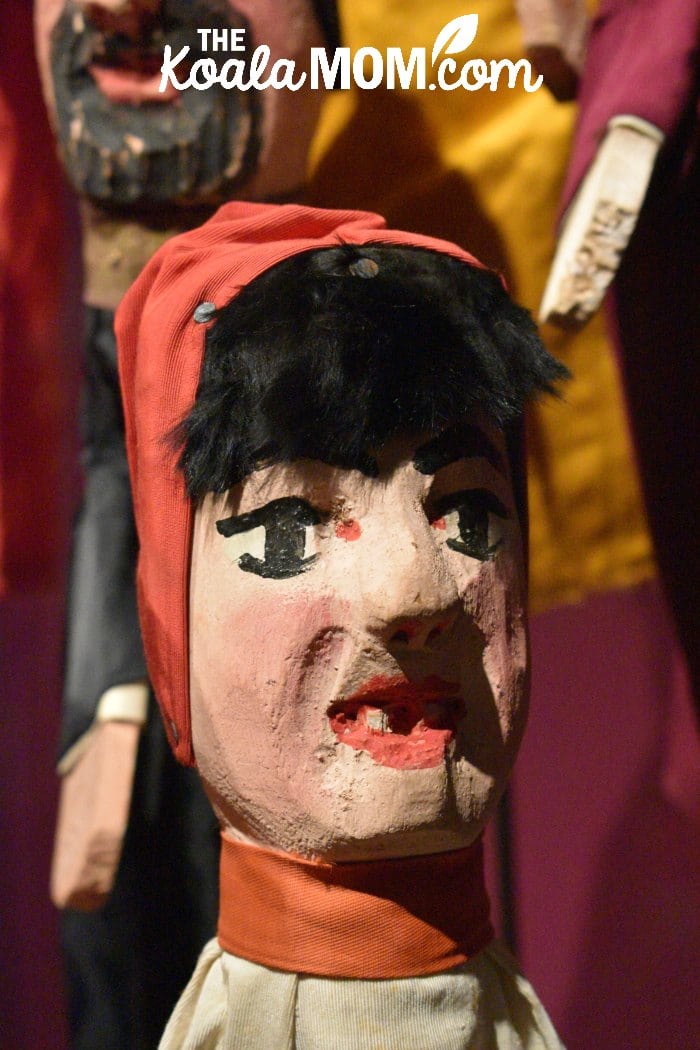
Most of the puppets are from MOA’s own collections. Some are new, carefully commissioned or chosen by Dr. Levell to complete or complement the existing collection. A few (including the giant welcoming puppet) are on loan for Shadows, Strings and Other Things.
5 Types of Puppets
When I think of puppets, I think of dolls dangling on the end of strings, like the alpine scene in Sound of Music. That’s actually only one type of puppet—string puppets. Puppets have a long history that varies from culture to culture.
All the puppets at Shadows, Strings and Other Things were beautifully displayed in either glass boxes or on stages. The museum used lights to help animate the puppets. There were also videos about each form of puppets, which took viewers both behind the scenes and into a puppet show.
Shadows, Strings and Other Things explores the art of puppetry, revealing that no matter the origin, size, or medium, puppets are powerful conduits of creativity, activism, and social commentary.” ~ Dr. Nicola Levell
String Puppets
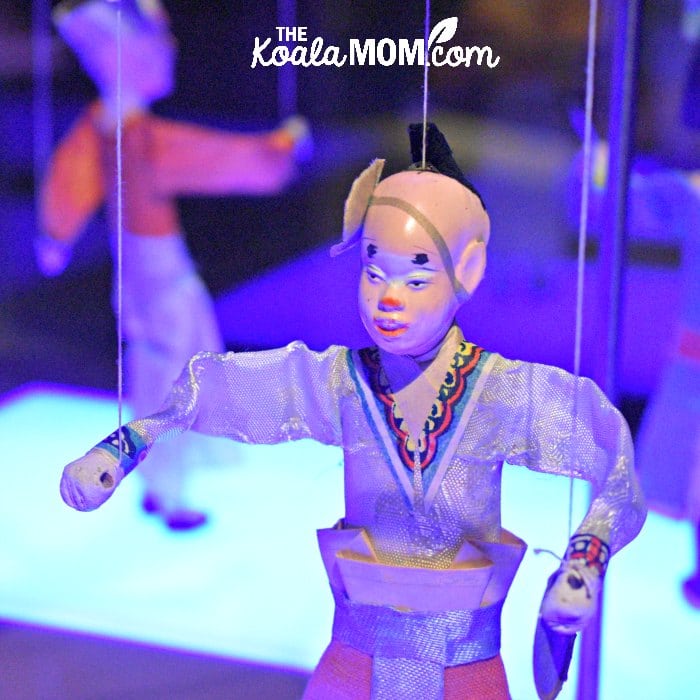
String puppets or marionettes are in many ways the most complex of puppet forms. Strings, wires or lines are attached to their articulated body parts… and sometimes joints… as well as eyelids mouths and chins… The more strings, the more nuanced and refined the puppet’s movements are.
String puppets range in size from the smallest puppet in the exhibit (above) to about two or three feet tall. Each set of puppets told a story, such as the set of soldier puppets ready to go to war with Charlemagne.
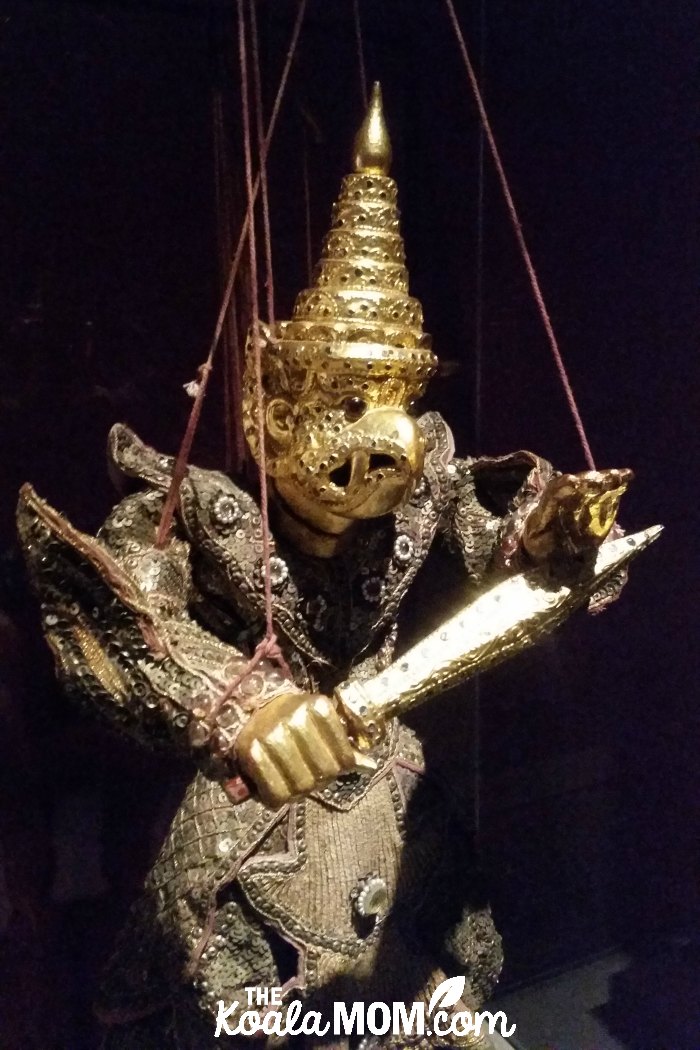
The realism of the string puppet enables viewers to suspend their disbelief and identify with these storytelling characters to inhabit parallel worlds.
In this area, a couple of the puppet boxes were at a child’s height. One three-year-old on the tour enjoyed getting eye-level with these puppets. I was happy to hear that Dr. Levell and her amazing team had considered children when putting together Shadows, Strings and Other Things.
Shadow Puppets
Who hasn’t tried holding their hands in front of a lamp to create shadows on the wall? Shadow puppets can be as simple as a pair of hands, or as intricate and delicate as fine lace. This form of storytelling began in China and India over two thousand years ago.
In shadow play, the puppeteers are hidden behind a stretched screen of white cloth and a bright light-source hangs overhead. As the puppeteer manipulates the puppet figures… the shadow characters come to life: walking, gesticulating, twisting, distorting, growing, receding and shrinking from sight.
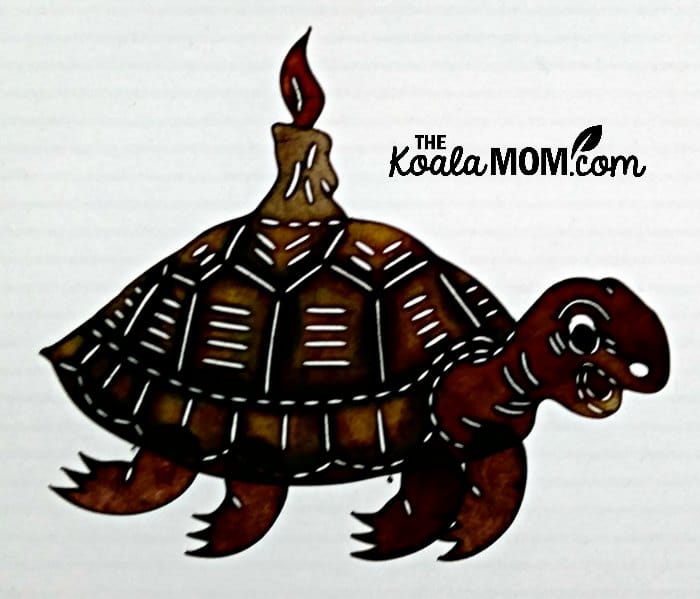
The shadow puppets were intricate figures with holes for light to shine through. Some were black puppets, while others were beautifully coloured. The shadow puppets of Asia are made of leather, carefully cut and treated until it’s transparent and then dyed with bright colours to make the puppets.
Here, again, kids were considered. A box on the wall held a deer puppet, and kids were invited to find that puppet in the shadow scene.
Hand Puppets
Most kids have had a hand puppet or finger puppet to play with sometime. Like string puppets, these are an iconic form of puppet. This part of Shadows, Strings and Other Things included a Punch and Judy stage with puppets as well as Asian hand puppets.
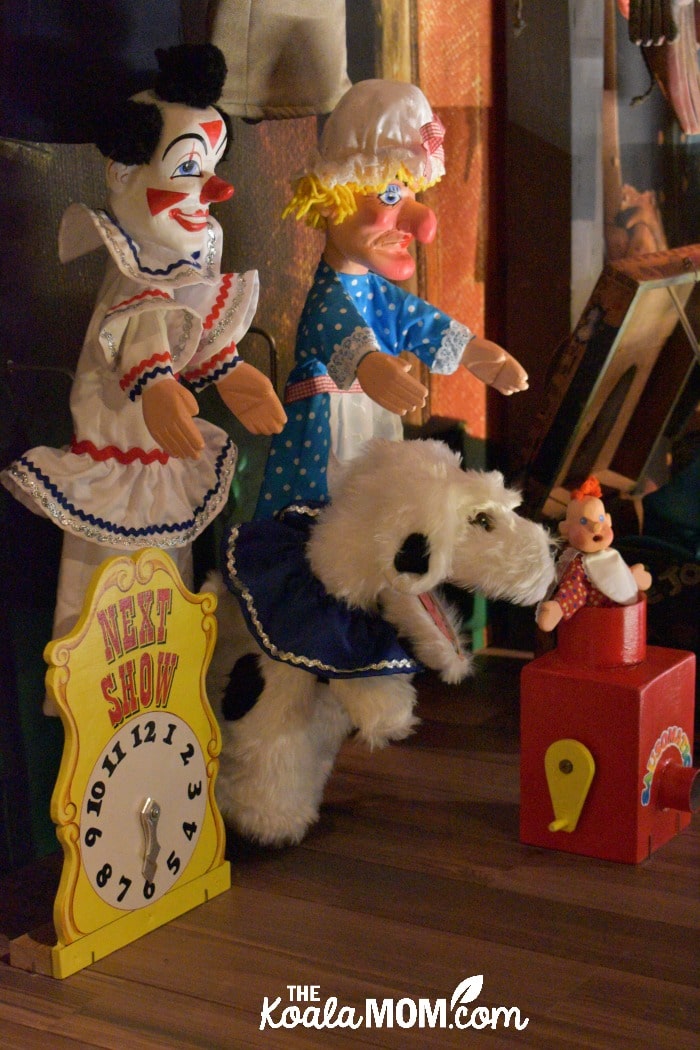
Many of these puppets were stereotypes—recognizable figures that told familiar stories. Dr. Levell talked about how puppets could be easily switched during the show. She also mentioned that puppeteers would wrap their fingers in bandaids, as the insides of the puppets could be quite rough and the puppet shows were often very physical, with puppets clapping or hitting each other.
The hand puppets also included beautiful, doll-like puppets (which Lily liked much better than most of the others).
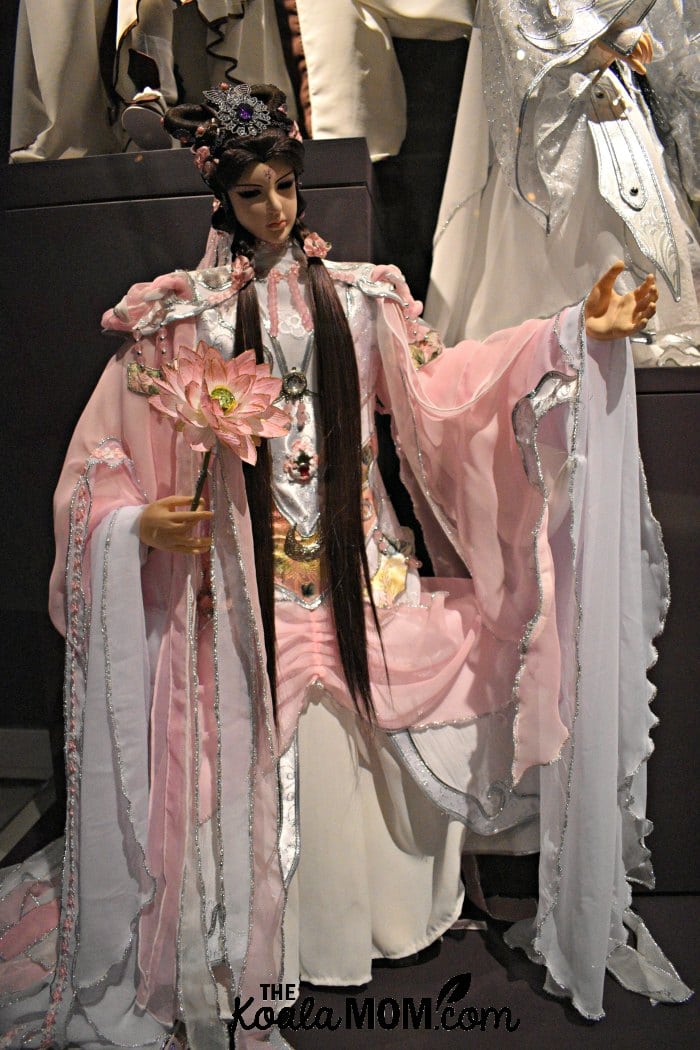
Rod Puppets
The rod puppets caught my attention because my aunt and uncle recently toured Asia and came back with photos of water puppets. These puppets act in water scenes, with rods going under the water and a screen to the puppeteers behind.
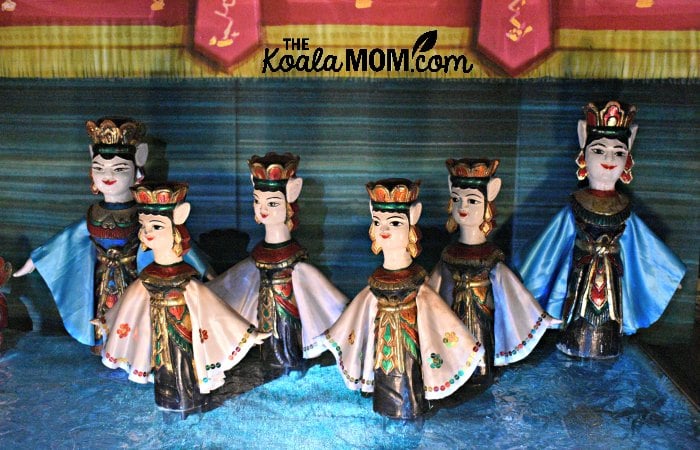
I couldn’t imagine standing in a pond to tell a story, much less being able to control the puppets using such long rods!
Stop Motion Puppets
We lost Lily in this part of Shadows, Strings and Other Things. She watched each of the stop motion videos by Amanda Strong more than once. Seeing the puppets on display (borrowed by MOA for this exhibit), while watching the movie playing on a screen nearby, was like sitting beside a famous actress at a premier of her movie.
Because of our recent attempts at stop motion animation, it was fascinating to see these silicone puppets and how they were used in the movie. One of the puppets was Amanda herself, something Dr. Levell said frequently comes up in puppetry (and in storytelling!).
More about Puppets
Shadows, Strings and Other Things is a fascinating way to explore storytelling, culture, history, art, and more. If your children enjoy this exhibit, here are some resources to help them learn more about what they saw.
 Vancouver Puppet Theatre is a local company that offers kids’ workshops and birthday parties.
Vancouver Puppet Theatre is a local company that offers kids’ workshops and birthday parties.
Children can learn to create their own shadow puppets with Hand Shadow Fun. This is a great idea for family camping trips—pack a flashlight and tell bedtime stories in the tent!
Children can tell their own stories with a set of 8 Hand Puppets.

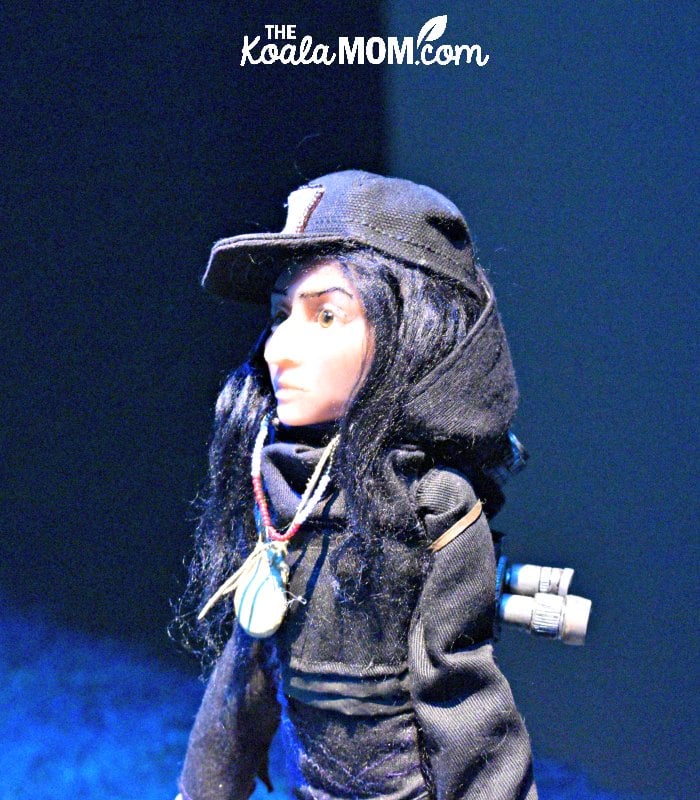
No Responses Yet